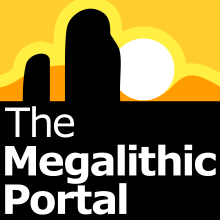For years, archaeologist Timothy Pugh thought he was simply following the cows as he walked across the site of Nixtun-Ch’ich’, an ancient Maya city in northern Guatemala. The site ... is now part of a cattle ranch, covered with tall grass—perfect grazing land. Pugh tended to follow the paths the cattle had already created as they tamped the grasses down with their hooves while they grazed, picking their way between mounds containing the remains of ancient ceremonial platforms up to 13 feet high.
With an area of about one square mile, Nixtun-Ch’ich’ was unusually compact compared to other Maya cities. Back in 1995, Pugh, now at Queens College, and his adviser at the time, Prudence Rice (archaeologist, professor emerita, Southern Illinois University Carbondale) mapped the site by identifying ancient buildings from their raised outlines on the surface and recording a GPS point at each of their corners. By 2013, Pugh thought the map of Nixtun-Ch’ich’ was due for an update. New technology had transformed mapping techniques, allowing archaeologists to gather more GPS data than ever before, including subtle changes in terrain. “We collected 80,000 points in just a few months,” Pugh says. More importantly, he no longer had to limit himself to the buildings he could see. Now, Pugh could simply record a GPS point every 6.5 feet, whether he thought there was a building there or not. “In that way, you don’t bias the data while you’re working,” he says.
New mapping of the city shows it was laid out on a grid pattern, the only one known in the Maya world.
The effort quickly paid off. The GPS equipment detected slight rises and falls in the landscape that had been all but invisible beneath the grass. Buildings and streets Pugh hadn’t noticed before began emerging from the data. And when he started piecing together a new, more complete picture of Nixtun-Ch’ich’, a striking pattern jumped out at him. The city’s buildings were arranged in straight lines, like the structures on a modern city block. Major streets ran almost exactly east-west, with shorter north-south avenues intersecting them at nearly perfect 90-degree angles. It was unmistakable: Nixtun-Ch’ich’ was laid out on a grid, an urban form so unusual in Mesoamerica that Pugh and Rice had never even thought to look for it. Pugh then realized that the paths he had been following through the grass weren’t originally created by grazing cattle. The animals were walking along ancient streets, and he had been too.
“In the Maya area, it’s unique,” says Pugh. “There’s no other site like it that we know of yet.” David Freidel (archaeologist, Washington University, St. Louis) who studies the Maya, agrees. “It’s a planned, gridded city. It has big plazas, big pyramids...it has everything you expect, only it’s not dispersed over a landscape.” Nixtun-Ch’ich’ is so far outside the norms of Maya city planning that Pugh and Rice first thought that foreigners must have built it. But as they’ve continued to excavate, they’ve realized that Nixtun-Ch’ich’ was unequivocally a Maya invention—and that it might reveal why these ancient people settled down and built cities in the first place.
For more, see http://www.archaeology.org-maya-urban-grid
Something is not right. This message is just to keep things from messing up down the road
